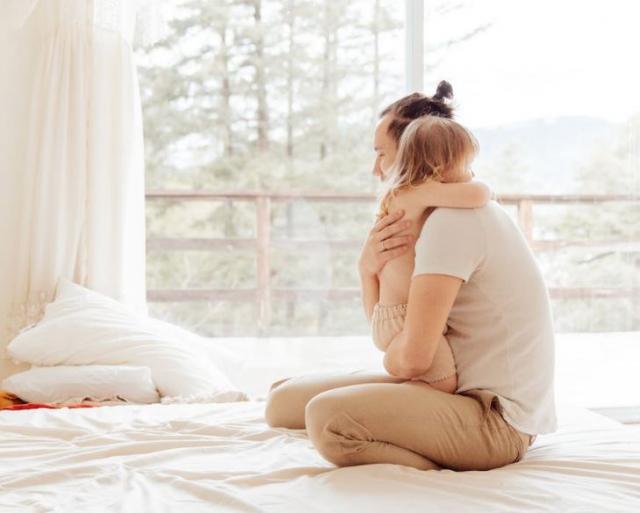The pressure to have your child fully ‘toilet-trained’ can be quite significant for some parents, particularly if you are sending your toddler to a creche or playschool soon. Many factors can contribute to a delay in toilet learning for some children, and one significant factor is the fear of the toilet or a fear of passing a poo. Most parents presume that this is a rare occurrence, but it is a lot more common than you would think. So what can you do?
The first step is understanding why this is happening. The cause is quite often an interplay of a few different physical, social, psychological and/or environmental factors. What are they and how can we help?
-
Physical factors:
Firstly, identify any possible underlying physical issues that are contributing. If a physical reason is causing any pain for the child when using the toilet then they will start holding onto their poo so that they won't feel that pain.
Constipation is a very common cause of pain due to passing a hard and or large poo. Withholding is a reflex response. Memories of pain are triggered and so the child stops the poo from coming out by clenching their pelvic floor. The longer that poo stays inside their rectum, the drier and harder it becomes and therefore harder and more painful to pass. The child then gets into a vicious cycle. To break the cycle the constipation must be diagnosed and treated with prescribed osmotic laxatives by a doctor; as per The NICE Guidelines 2010). This can take time.
Sensory input such as smell (air fresheners, smell of others wee or poo), tactile sensitivities (water splash) and auditory sensitivities (sound of dryer, flush of the loo) can also contribute to your child’s fear of using the toilet and subsequent withholding. It can help to adjust the bathroom environment, as best you can, according to your child’s sensory preferences and/or sensitivities.
-
Psychological factors
In addition to the child’s fear of the pain associated with constipation, there are other psychological factors that can also contribute;
Fear of the unknown; We frequently encounter children who have specific fears of the actual toilet itself, specifically the unknown aspects (e.g cistern). Cartoon comic strips or social stories (Carol Gray, 2015) can help explain what the toilet is and how it functions to help dispel these fears.
A predictable toilet routine with your child (using a visual schedule if needed) where you go through all of the steps involved can also help reduce anxiety.
Separation anxiety: Children who experience separation anxiety are more likely to fear going into the toilet as it involves being alone. The ‘safe distance’ approach can help with this. Initially, you remain right outside the door and talk to them as they go, after a few days once they feel relatively comfortable, you can move a few metres further away from the toilet, and so on until they can go independently.
Fear of Judgement or shame: At school, children can sometimes fear that they might not wipe themselves properly; that someone might hear them or smell their stools/wind in the toilet and so they develop a fear of judgement around this. A social story can really help to reassure them that it’s perfectly normal for poos and wee to make noise and smell.
Building confidence in skills involved in toileting can also help a child’s confidence in going in school (e.g. wiping, pulling up and down pants, washing hands).
A parent’s stress levels about the issue can also compound the child’s fear. This stress is often fuelled by unrealistic expectations & beliefs. Some expect the issue to resolve very quickly, when in fact it can take weeks if not months. If you find that you are becoming very triggered by the situation, try to ‘reset’ your nervous system before bringing your child to the toilet (e.g. deep breaths, stepping outside for a few mins). It’s also important to challenge your unrealistic beliefs.
-
Social & Environmental factors:
Seating: It can help to ensure that your child is able to sit on the toilet properly and feels stable on it (as children can often fear falling into the toilet). A toilet insert for smaller bottoms is important, so they are sitting comfortably and not gripping onto the toilet seat to steady themselves. If they are gripping to hold on, then their pelvic floor will not be relaxed and therefore poo will not come out easily. A foot stool can also help to get that pelvic floor relaxed.
Make the bathroom fun: playfulness often helps to reduce anxiety; music, lava lamps, stickers on the toilet seat, coloured toilet water can all help. It can also help to get them to blow bubbles when sitting on then loo which helps to relax the pelvic floor muscles.
Monitor TV/YouTube content: Toilets and poo feature in several children’s cartoons and YouTube videos. These often include scenes whereby toilets overflow; toilets blow up or there are poo monsters in the toilet. These can contribute to your child’s fears.
We hope this helps.
Article submitted by: Ann Costigan & Dr. Rebecca Quin
Ann Costigan is a Pediatric Nurse, Constipation and Toilet Training Expert
Dr. Rebecca Quin is a chartered senior clinical psychologist & director of the Psychology Practice, Bray
You can find them on Instagram for more tips and strategies on this topic: @pooandtheloo @dr_rebecca_quin







